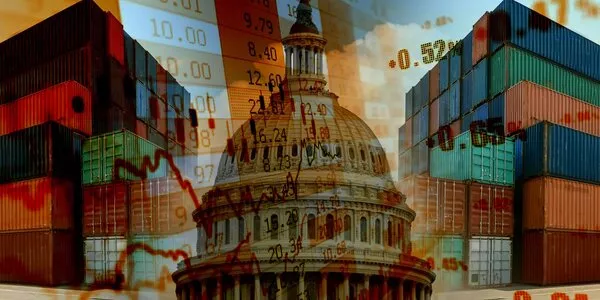
Weekly Update - United States: Federal Reserve wrestling an atypical economy
The US economy is still being disrupted and distorted by the unprecedented nature of the Covid crisis. The United States bounced back sharply from Covid, helped by a highly expansionist mix of monetary and fiscal policy. Generous fiscal support packages boosted household income and this has had two consequences that continue to be felt today: a significant increase in household savings (around 12% of GDP) and a focus of household demand on goods, particularly durable goods. Another big post-Covid disruption is the destabilisation of the American jobs market. Unlike in Europe, US companies shed workers wholesale during the pandemic and then rushed to rehire them once it was over. This has also had two consequences, whose effects are still at work: some households, particularly people nearing retirement, did not return to the labour market, and those who did came looking for wage rises.
Slowdown in prospect, partly caused by the switch in economic policy. The economy is starting to slow down from its post-Covid surge. Consensus forecasts put growth at just 0.4% in 2023 after 2% in 2022. The tail-off is being driven by a number of factors, including high inflation eroding spending power for families and, most notably, tighter monetary policies which are weighing on households and companies alike and will eventually depress the labour market. Consumption should drop substantially as a result. That said, there is still a large reservoir of savings out there and the labour market is only tightening slowly, which makes the speed of adjustment uncertain. On the corporate side, the severe tightening of financing conditions is likely to rein in investment, but the unusually healthy state of company balance sheets means that here, too, the scale and speed of the adjustment is hard to call.
The Federal Reserve faces structural changes in its policy transmission channels. For some months the Fed has been embarked on a sharp tightening of monetary policy amid still high levels of inflation. Since the start of the year the Fed has hiked its policy rates by 400 basis points and markets expect a further 100 bp tightening in coming months. As we said, it is uncertain how quickly households and companies will alter their behaviour in response, and this is making the Fed's job considerably trickier. Besides these uncertainties, the Fed also needs to wrestle with the unusual nature of this economic cycle. Structural changes have modified the investment habits of households (in the residential real estate market) and companies and this could make central bank actions less effective than in previous cycles. Households have less debt and, crucially, little exposure to variable rates, which means they are better able to tolerate higher interest rates. Real estate investment is also lower as a share of GDP than in previous crises and there has been no phase of over-investment by corporates.
For further information, see our Strategy Focus.
Finally, in the main events of the week, we chose to talk about the activity in the Euro area and about the minutes of the last Federal Reserve comitee.




